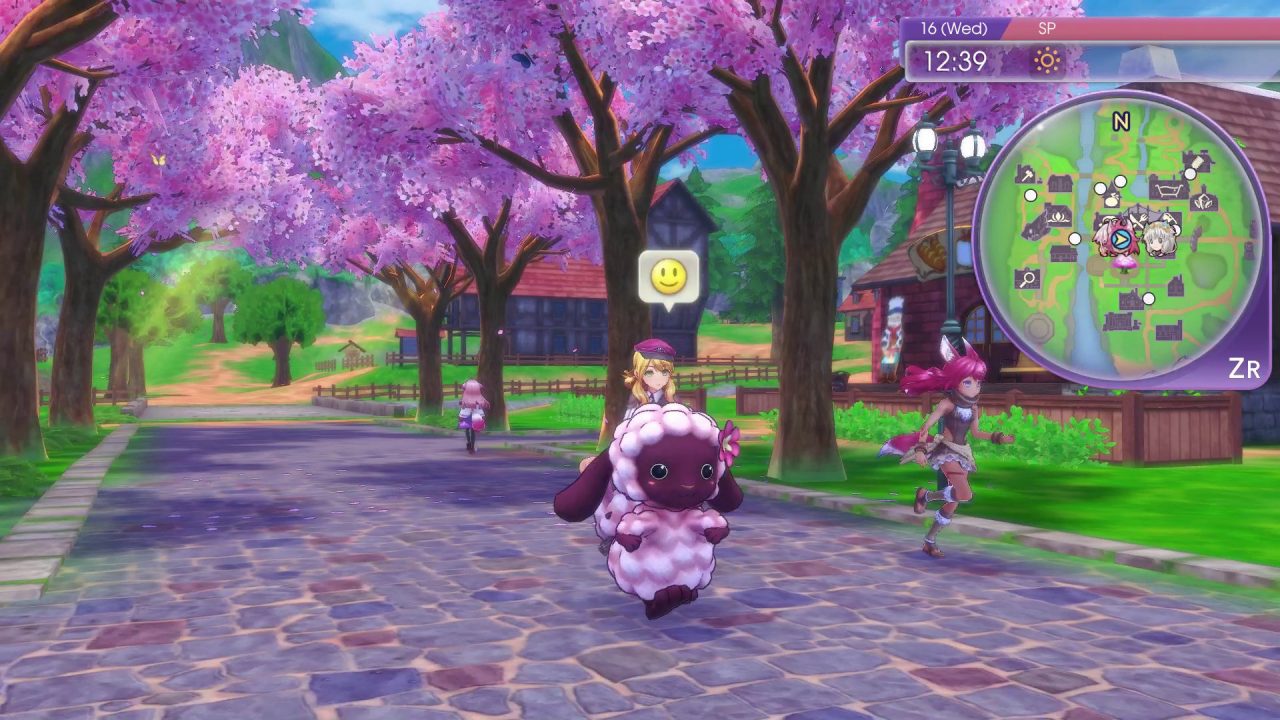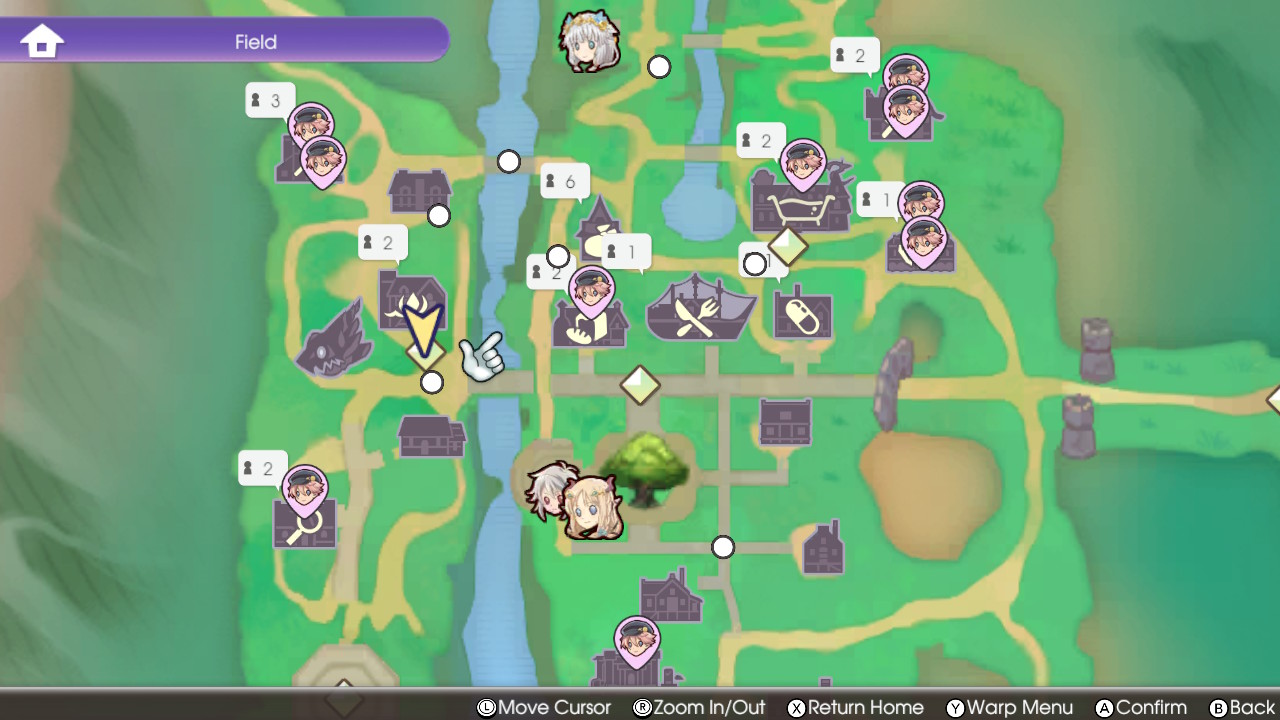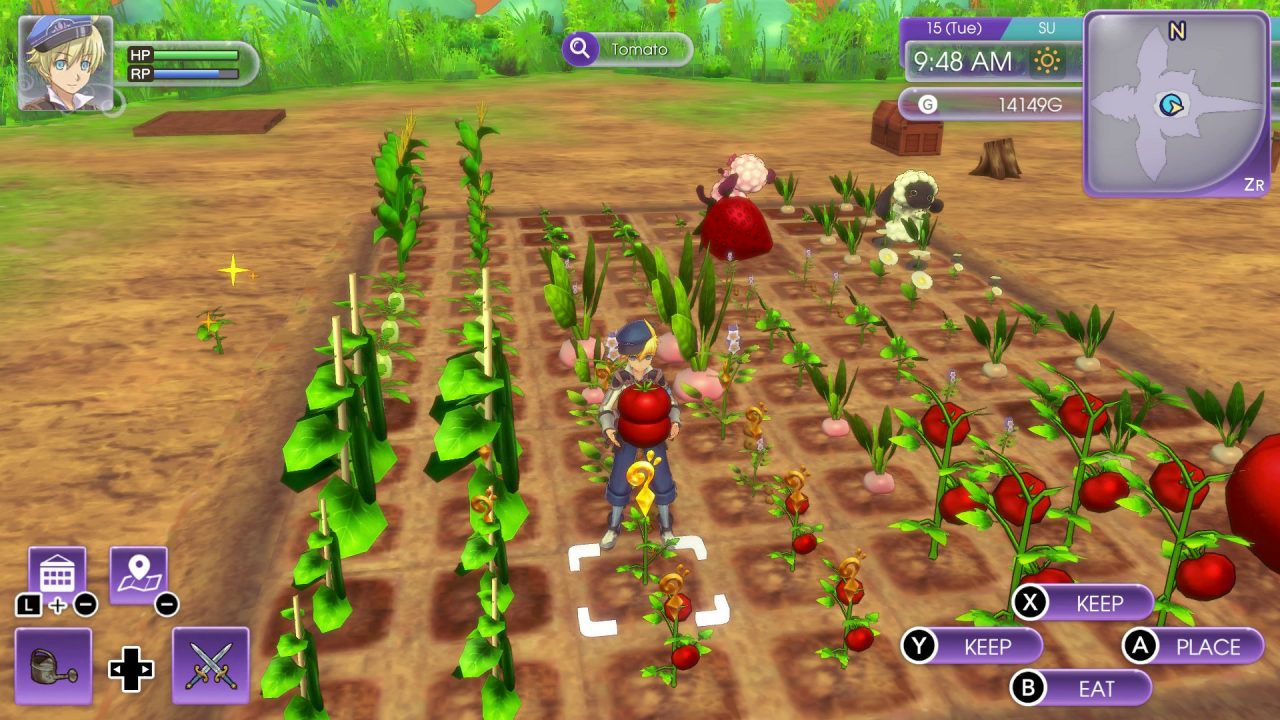It’s difficult to combine drastically different genres into one game successfully, but it’s something the Rune Factory series frequently accomplishes. This continues with Rune Factory 5, a title that is positively brimming with content, charm, and fun. By default, the series offers a lot to do, taking the farming and relationship-building of the Story of Seasons series and merging it with dungeon crawling and an action RPG combat system. Surprisingly, none of these features take a hit in terms of their quality: there are tons of different seeds to grow and lots of elements at play when it comes to raising them, such as using certain items to increase quality or growth speed while making sure the soil level stays high. Caring for livestock—or in this case, monsters—is a relatively simple yet rewarding affair, as some monsters produce helpful byproducts, and all of them can assist in fieldwork, join you on excursions, and partake in battles.
Battles in Rune Factory 5 are simple: the B button allows you to swing your weapon, and you can assign spells to X and Y. This recipe for button-mashing balances out with a plethora of dungeons to explore, each with distinct layouts and unique “puzzle” gimmicks, such as switches that open one door and close another, or traps to avoid. The fields that connect each dungeon are also surprisingly full rather than empty (as large, open expanses of land in video games can oftentimes be). Reaching the next dungeon can be a relatively easy trek, as their locations appear on the map, but going off the beaten path can prove exceptionally rewarding. For instance, Woolies, the sheep-like enemies that produce fur, can be found right away and are impossible to miss. But to find Cluckadoodles, the chicken-like monsters that produce eggs, and Buffamoos, cow-like creatures that produce milk, you’d have to explore the woodlands in directions that don’t lead directly to any dungeons.

You’re also encouraged to make the most of the vast explorable areas because materials truly litter the ground. Although they can sometimes be difficult to make out amidst the lush environments—even with their sparkling special effects—there are an extensive number of items to find all across the region. In addition to rare seeds that can’t be purchased normally until much later, there are regular materials that prove relevant thanks to the series’s returning and comprehensive crafting system. You can craft whatever you need, from medicines to weapons and armor, and cook all sorts of food. The loop of making something, leveling up that particular skill, learning a new recipe, then repeating is addicting, as the direct expression of ever-increasing levels often is. It’s also rewarding, as foods offer fantastic healing and buffs—and make great gifts—and crafting is necessary to ensure your weapons and armor remain up to snuff.
The sheer number of things you can make—and grow—is absolutely exhaustive; there were still plenty of seeds and recipes I hadn’t yet unlocked by the time I finished Rune Factory 5’s story, and the story is massive. It took me over 60 hours to complete the main storyline, which involves going to 13 different dungeons—four of which are split into two distinct halves each, making it closer to a total of 17—and uncovering the mysteries behind the world’s recent disturbances. The story touches on plenty of intriguing topics, such as the different ways to enact justice, but the narrative really shines in the interactions with the Rigbarth townsfolk. Rune Factory 5 features an impressive total of 12 love interests comprising six bachelors and six bachelorettes. Not only is the option to marry any love interest regardless of your chosen gender a fantastic feature for inclusivity, but it also gives players more events to partake in, allowing the opportunity to form bonds with all of Rigbarth’s inhabitants.

Special events are marked on the map, making it crystal clear what events can be triggered and where, compared to the past when there was no way of knowing how to start an event, making a guide practically required. Rune Factory 5’s events are frequently split into numerous “segments” spanning various amounts of time in several locations. One event may take you into a dungeon to help a character safely forage for items, while another may involve speaking to numerous other characters around town to prepare for a gathering. This makes it feel like you’re actively taking part in the events; the further use of the setting itself also contributes to a world that feels fleshed out. This also means other love interests and even the regular townsfolk get involved in the events, adding not only a sense of cohesion but a lot of opportunities to get to know the game’s considerable cast.
The cast is also brought to life through voice acting, although Rune Factory 5 isn’t entirely filled with voice lines. It can be jarring to hear a strongly voiced line of dialogue followed by a line that is just as important but not voiced, then back to a voiced line. It almost seems as if voice-acted lines are chosen based on the character rather than on the scene: instead of a particular scene being fully voiced, only one character will have their lines read out. This isn’t as unsuitable during the love events, where the focus is clearly on the love interest despite everyone else’s involvement, but it definitely stands out during main story scenes.

Once the main story is complete, however, there is always more to do. Once you unlock the different seeds, the act of farming is still an addicting one, just as it is in Story of Seasons. Post-game unlockables, like a vacation home and an extra dungeon, also contribute to the game’s expansive feel while encouraging the continuation of farming and dungeon crawling to save up funds and complete requests. There are also plenty of other elements of Rune Factory 5 that will keep you busy, such as renovating all the different buildings to increase their item stock and the yearly festivals that range from crafting particular items to full-on minigame competitions.
A game as jam-packed as Rune Factory 5 runs the risk of being overwhelming, but each facet works in tandem with the others so seamlessly that it blurs the lines between where one element ends and another begins. It spaces out the infinite gameplay loop of farming sims with simple but enjoyable dungeon crawling and tosses in an endearing cast of characters for good measure. Despite how full the game is, it’s likely you won’t be able to get enough of it, as its enrapturing nature always leads into something else for you to do. Once you’ve settled into Rune Factory 5, you’re in it for the long haul.


